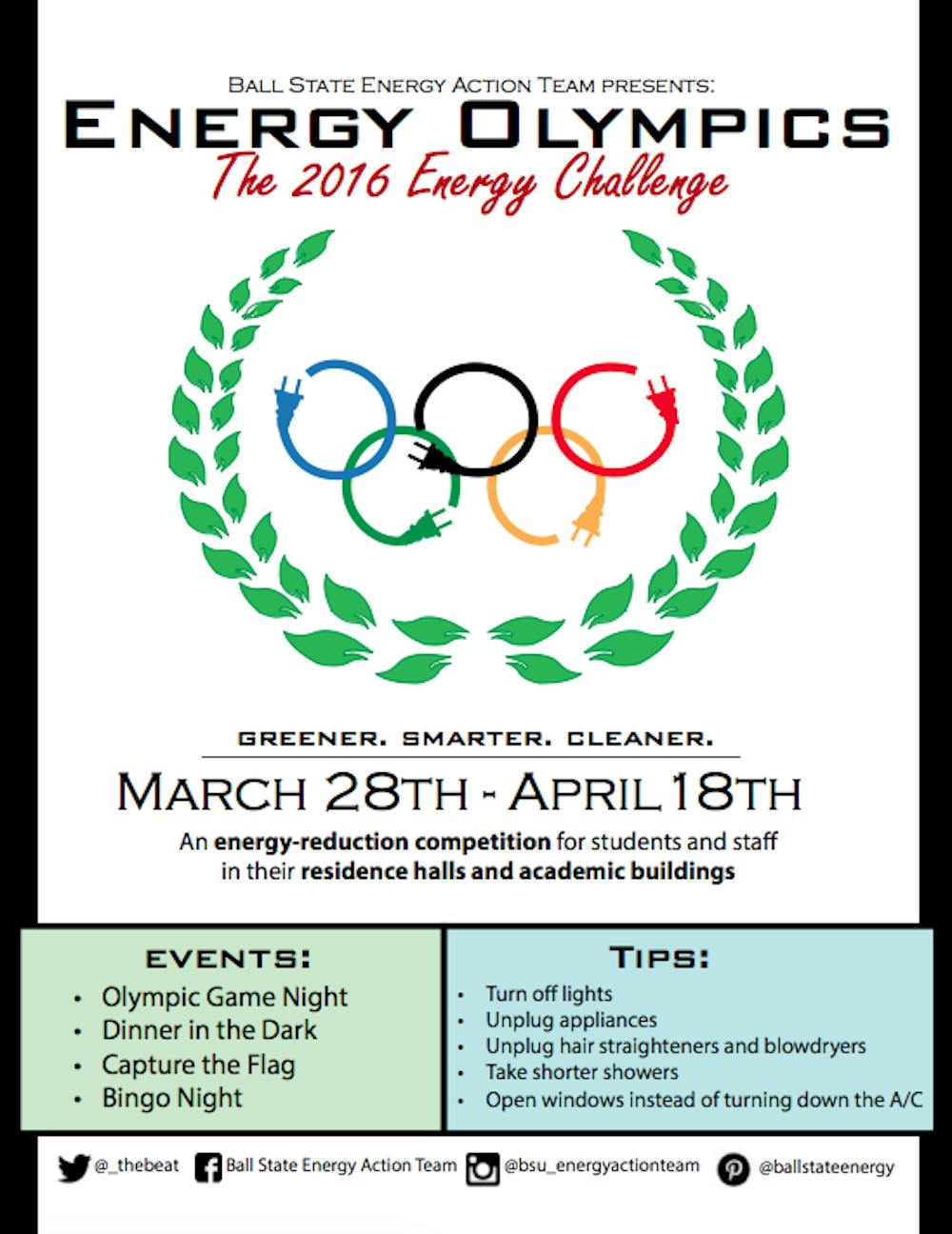How wasteful are we?
- The economy wastes 61 to 85 percent of energy that it uses
- Americans spend $130 billion a year on wasted energy
- The amount of energy wasted by 75,000 average American homes in a single year is equal to the waste that occurred in the 2010 BP oil spill
- About 95 percent of the water used goes down the drain
- One drop per second from a leaky faucet equals around 2,700 gallons a year
Source: Energy Resource Center
One student organization is working to reduce Ball State’s carbon footprint on the earth through a campus-wide challenge to save energy.
Ball State Energy Action Team will be hosting its annual three-week energy challenge beginning March 28. This year’s theme is “Energy Olympics.”
BEAT is a student organization aimed at reducing on-campus energy use and promoting green initiatives to students and faculty to make Ball State's campus greener. It provides resources to help students and faculty reduce their energy consumption and practice sustainable living, according to www.bsubeat.com.
Residence halls and academic buildings will be competing to see who can save the most energy.
“Everyone that lives on campus competes whether they know it or not,” said Casey Malue, BEAT head of PR and advertising. “Two weeks before the challenges begins, [BEAT] records baseline readings of building’s energy use. All will be competing to see which building reduces their average energy amount during the three-week period.”
The students and staff are responsible for the amount of energy a building uses, and by reducing energy, students are not only helping the planet but also themselves, Malue said.
“Saving energy saves money, electric and gas," Malue said. "There are all kinds of things you can do to reduce energy, like turning off lights, unplugging things, turning down heat and opening up windows. People don’t understand or worry about it, but if you are energy effective, you really do help the environment, which makes living more livable and green.”
Participants will be able to keep track of each building’s energy use by viewing an interactive online building dashboard, according to the Ball State Energy Challenge 2016 Fact Sheet.
BEAT’s main goal is to reduce energy by 10 percent.
The residence hall and academic building that reduces its average energy use by the greatest amount during the three-week competition will receive a party for the entire building.
Along with the energy challenge, BEAT will also host different events across campus, like Lunch and Dinner in the Dark at Noyer Retreat and the Buff on April 7, dodge ball on April 14 and bingo nights in various residence halls.
Participants can pre-register for the events and choose which residence hall or academic building they want represent.
The overall goal of BEAT through the energy challenge and Energy Olympics events is to eventually make Ball State a leader in responsible energy consumption.
"The energy challenge will strive to educate students about their effect on the environment and how they can be proactive in reducing their carbon footprint,” said Sean Costello, BEAT head researcher for the energy challenge planning team. “In doing so, we hope that the energy challenge will set precedence to reduce their energy consumption in the future, making Ball State a leader in sustainability.”





